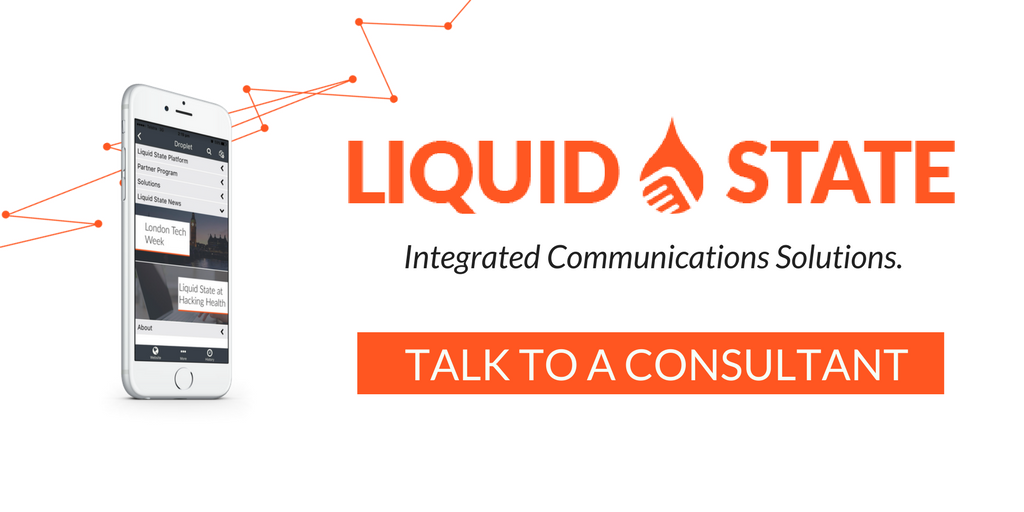Build vs Buy: Turnkey Solutions or Custom Software?

The build vs buy is a common dilemma faced by businesses implementing new enterprise software. Balancing immediate business needs with long-term growth is both paramount and challenging. Ultimately, it comes down to devoting significant resources to custom software development or leveraging turnkey solutions.
The ideal solution is to partner with one contractor that provides either a full custom service or turnkey package. Whether looking at turnkey solutions or something customised, it is important to map out exactly what you want the software to do and the processes it will follow. As you start the decision-making process, the golden rule is to understand your business needs and make sure the solution is a good fit. Once you understand the business requirements and how the new software will address this, it is time to consider your options. Here are 3 key types of enterprise software solutions:
- Off-the-shelf Software
- Customised Software
- Customised Off-the-Shelf Solutions
Off-the-Shelf Software
Off-the-shelf software can be described as a ‘turnkey’ or ‘boxed’ solution. A turnkey solution is ready to use and can be immediately and easily implemented into current business processes. These types of solutions are aimed at addressing distinct needs that are often targeted towards specific companies or industries. As such, these solutions are feature-rich however may include functionalities your business does not need.
Turnkey solutions can give businesses the necessary boost to perform more efficiently and productively. More specifically, off-the-shelf software can reduce total project time, create more efficient workflows, and offer ongoing support. This approach to enterprise software is considered are ideal for businesses with a:
- Limited budget. The costs associated with building custom software may be a significant reason for businesses to avoid choosing this option. Turnkey solutions are less expensive and quicker and easier to implement.
- Lack of technical proficiency. If your business does not have a strong software team with the necessary skills to build custom software, it may make sense to choose a turnkey solution.
- Lack of time. Building proprietary software takes a great deal of time to complete successfully. If time is limited, then a turnkey solution may be a better choice.
For example, hospitals often lack the time and resources to create all the content they need to implement a full patient engagement platform. So, an off-the-shelf solution with key clinical pathways already developed for major treatment plans might be an ideal solution.
As mentioned above, there are strong benefits when considering an off-the-shelf solution; primarily the low up-front cost. Turnkey solutions are generally more affordable due to their development costs being distributed across several clients. However, keep in mind that these types of solutions may come with recurring fees for software maintenance and support.
Off-the-shelf software comes with pre-ordained processes and functionality. One of the downsides of this and the lack of customisation is that it may not be a perfect fit for your needs. In this case, business processes may have to be adjusted to fit the software. Therefore, when considering turnkey solutions, it is imperative that the features of the software capture your business needs. As a general rule of thumb, try to find a software provider that can satisfy at least 80% of your businesses requirements. Remember to consider what you are not getting in the software and ask questions like:
What business requirements won’t be addressed? How will these be managed?
Will you be able to adjust your processes to account for these? Could this create inefficiencies?
Keep in mind, that with turnkey solutions, future software updates will often be targeted at a broader base and may come at a slower pace than your business evolves.
Pros
- Lower up-front cost
- Feature-rich
- May meet most of your business needs
- Support is often included
- Quicker to deploy
- All design, development, QA/testing is handled by the vendor
- Upgrades to software may be free or offered at a reduced cost
- Reduced risk if your business lacks software expertise or has little industry knowledge
Cons
- May come with upgrade or maintenance costs, licensing fees, or per-seat costs
- May not meet all business needs
- May include features and functions that are not wanted or needed
- Business processes might have to be altered to match the software’s functionality
- There may be infrastructure/platform requirements that your business cannot support – or can with additional cost
- It may have high customisation costs or be impossible to customise
- Future enhancements may not be relevant to your business
- Slow to evolve with your business or industry and may lack scalability
Fully Customised Software
So you have clearly defined your business needs, processes, and desired functionality, and compared these to a number of off-the-shelf solutions. However, none appear to be a good enough fit for your business… In this case, it may be worthwhile considering a custom development approach. This will allow your business, or the hired software development company, to create a custom piece of software that meets every need; a fully integrated and holistic solution to match your business processes.
According to Forbes, building custom software can unlock a host of benefits. However, companies should only pursue this approach if:
- Customised software can provide a competitive advantage relative to your competitors.
- You are building a large business that can spread the cost of a proprietary system over a large number of clients.
Just like off-the-shelf solutions, there are downsides and risks to custom development. Developing proprietary software can allow your businesses to scale effectively. However, significant resources must be dedicated to the development, and this can be expensive. Since the software is built to match your business requirements, this increases both project costs and timeline. The longer it takes to develop your software, unsurprisingly, the more upfront costs it will incur. Therefore, it is essential to ensure that there are significant business resources available before embarking on custom software development. If the initial costs of custom development are too high, or the timeline for deployment is too long, it may be better to start small and layer functionality over time. This is known as a phased approach and will allow you to distribute the costs and deploy the core functionality sooner.
Custom development allows the software to fit your business, instead of your business adapting to fit the software. As a result, work processes will not need to be adjusted in order to accommodate the new system, which ultimately saves time and money. However, there is still the risk that the software might not be able to match every need.
A custom software project will most likely require the use of external resources such as a team of designers, programmers, quality control professionals and so on. One added risk of this approach is the level of dependency on the software company you choose to partner with. It is therefore essential to be well informed about potential vendors, their expertise, and their stability. When considering an external developer, ask questions like:
Have they developed similar systems before?
Are they taking steps to understand your business needs?
Can they support you with help-desk, updates, bug fixes, and future enhancements post-launch?
The software developer in charge of your custom solution will essentially act as an extension of your team, in what should be a lasting partnership. This availability of direct support can ultimately lead to quicker enhancements and iterations, ensuring the software does not become obsolete. Since the software belongs to your business, you do not have to wait for feature requests or enhancements. Therefore, custom solutions provide the opportunity to evolve your software alongside your business.
Developing custom software will also require you to create a small internal team to manage the various stages of development. This is an important factor to consider as you will need to dedicate adequate resources to the lengthy process of development.
Custom solutions have to be extensively planned as they become part of your business’s future growth. It is important to remember that a customised solution isn’t for everyone, nor is it a perfect match for every need. But the fact that custom solutions have the opportunity to meet each business requirement is advantageous. As long as you are aware of the risks and are able to mitigate them then custom software development might be a suitable solution for your business.
Pros
- Custom solutions are tailored to match business needs, processes, and security requirements
- You can implement a phased approach starting with the core essentials and add other features or functions at a later stage
- Can be developed using your business’s software language and infrastructure/platform
- Allows you to integrate with legacy software and future systems
- You own the propriety software
- Custom software may be a possible competitive advantage
- Direct vendor support available
- Provides an evolving solution that can stay current with your business – no obsolescence
- Changes can be made quickly
Cons
- Higher upfront costs and consequently higher risks
- Changes and feature requests may be billable
- Requires developer sources (with inherited risks)
- Requires developer communication during the software development cycle: requirements, design, development, QA/testing, and training will require business involvement
Customised Off-the-Shelf Solutions
A software company may have developed a turnkey solution that, with little customisation, will meet your specific business needs. There are some software providers that offer this customisable support, allowing you to start with a strong foundation and tweak platform to fit your needs. This way, they can leverage their off-the-shelf software and customise it to create a new tailored solution for your business; getting the best of both worlds.
A customised off-the-shelf approach is a viable route if the software provides a lot of what you are looking for and only some critical functionalities are missing. This type of solution has the advantages of low-cost entry and feature-rich software that aligns with your business requirements. In other words, this approach de-risks involvement and is a cost-efficient way to leverage the power of customisation without incurring the same development costs. However, keep in mind that off-the-shelf software customised after-the-fact may become less cost-efficient depending on the level of customisation required. Therefore, it is important to pick a solution that fits 80% of your core businesses needs to avoid over-customisation, inflated costs and potential performance problems.
Similar to custom development, there is the option to implement a phased approach, starting small and layering functionality over time. This will allow you to distribute the costs and deploy the core functionality of the software sooner.
Pros
- Leveraging feature-rich pre-existing libraries, frameworks and functionality reduces upfront costs and lowers risk
- You can start with the core essentials and add features and functions later at any time
- The solution is tailored to match business needs, processes, and security requirements
- Can be developed using a software language and infrastructure/platform matching your business vs. those of a ‘mass market’ nature
- Possible integration with legacy and future systems
- Possible competitive advantage due to a level of customisation
- Direct vendor support
- Changes can be made quickly
Cons
- The level of customisation determines the costs – if over-customisation occurs then the costs may turn out to be similar to that of custom development
- Changes and feature requests may be billable
- Software may come with upgrade costs, licensing fees, or per-seat costs
- Missing features and functions may not be possible to add through customisation
- If the base solution is not a good fit for your business then you may be trying to over customise pre-existing tools and leveraging less of the off-the-shelf software
If your business requirements can be met to a large degree by an off-the-shelf product, with minimal adjustments, then a customised off-the-shelf solution may be the most efficient and feasible approach.
Related 10 Tips for Successfully Implementing Enterprise Software
Related Custom vs. Platform: 3 Benefits of Using an App Development Platform
When evaluating off-the-shelf solutions, be sure to consider at least 3-4 options and understand how each one matches your business needs. Evaluate what each solution will and will not do, and how this might impact your business processes.
At Liquid State, we understand the importance of implementing enterprise software as a part of corporate strategy, and how this can improve the efficiency of business.To find out what Liquid State can do for your business download the factsheet, or get in touch with us today.


